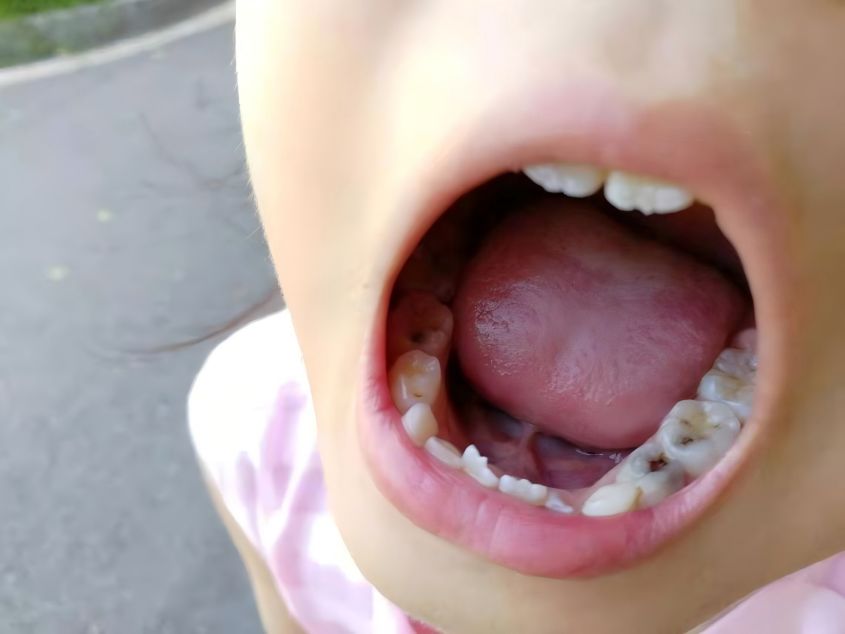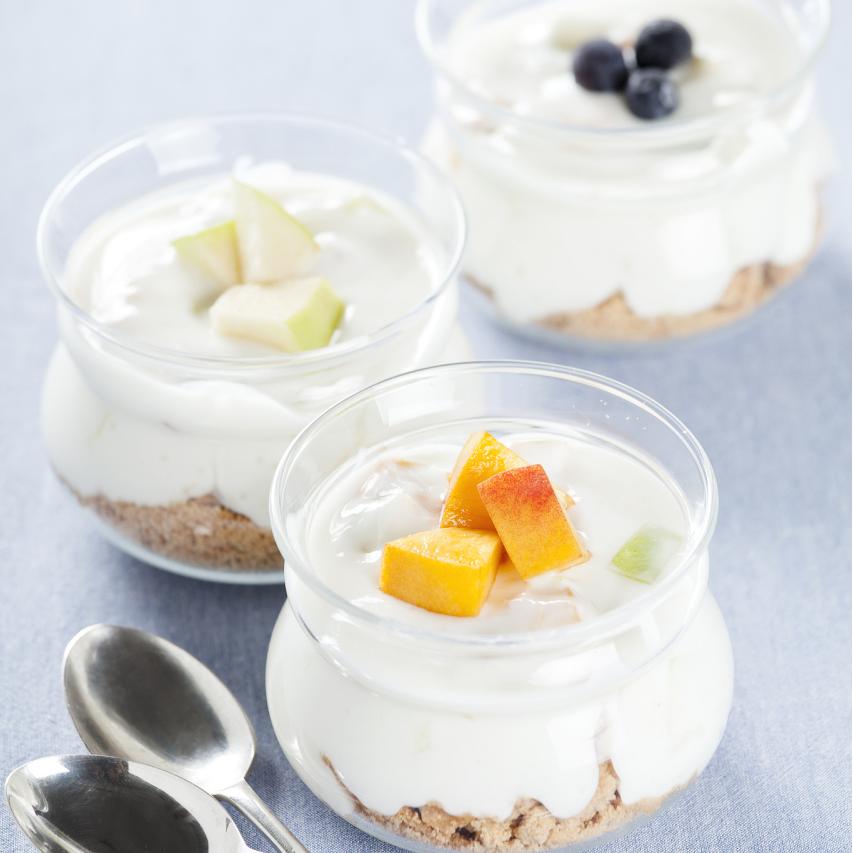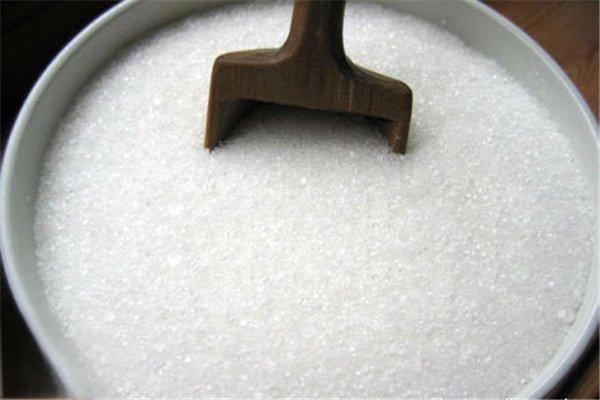What Is the Use of Xylitol Powder?
Xylitol is a naturally occurring five-carbon sugar alcohol that is widely found in many fruits and vegetables, but in very small amounts. It can even be produced by the human body itself. Xylitol's many health benefits have been scientifically proven, such as lowering blood sugar and preventing tooth decay [1]. Xylitol is now widely used in the research and development of food products as an excellent alternative to sucrose.
1 Sources and properties of xylitol
1.1 Sources of xylitol
Xylitol is commercially produced from agricultural crops such as corn cobs and sugar cane bagasse [2]. It is also derived from the xylan hemicellulose in birch and other hardwoods [3]. It is a natural and healthy sweetener.
1.2 Physical and chemical properties of xylitol
Xylitol's chemical name: 1,2,3,4,5-pentanol; molecular formula: C 5 H 12 O 5 Xylitol is a white crystal or crystalline powder with a sweet taste. Its sweetness is equivalent to that of sucrose, and it is highly soluble in water (about 160g/100ml), slightly soluble in ethanol and methanol, melting point 9296°C, boiling point 216°C, heat value 16.72kJ/g (the same as sucrose)[4]. Dissolving in water is endothermic, so when consumed in solid form, it produces a pleasant cooling sensation in the mouth. The pH of a 10% aqueous solution is 5.0 to 7.0.
1.3 Physiological properties of xylitol
Xylitol is an internationally recognized safe food substance: it is a sweet substance with nutritional value, the sweetest of all polyols, with a sweetness equivalent to sucrose, and also an intermediate in the body's sugar metabolism. A healthy person contains 0.030.06mg of xylitol per 100ml of blood even if they do not eat any food containing xylitol. The human liver can produce 5-15g of xylitol per day[5].
Xylitol is only slowly absorbed or partially utilized, and its calorie content is equivalent to that of glucose. One of its main features is its low calorie content: 2.4 kcal per gram, 40% less than other carbohydrates. Animal embryo toxicity, teratogenicity tests, fertility impact tests and a two-year long-term animal consumption test have proven that xylitol is safe and non-toxic. Tolerance studies conducted on healthy volunteers have shown that even when very high doses of xylitol are taken orally (100 g/day), the body tolerates it well and no adverse changes are observed. When the dosage is up to 130g/d, diarrhea occurs, which is because it takes 3-4h to absorb 40g xylitol. When taken too frequently, the above pathological side effects will occur.
The Joint Expert Committee on Food Additives of the World Health Organization does not set an ADI (acceptable daily intake) for xylitol. The Scientific Committee for Food of the European Economic Community believes that this polyhydroxy compound is acceptable for long-term use.
2 Health care effects of xylitol
2.1 As an adjuvant treatment for diabetics
Xylitol is the most physiologically active of all edible sugar alcohols. It does not increase blood glucose levels, and as a food for diabetics, it shows particular advantages over sorbitol. Xylitol, as a functional sweetener, can participate in human metabolism. After entering the bloodstream, it can penetrate cells without insulin and is metabolized quickly, without causing an increase in blood glucose levels [6]. It is the most suitable nutritious sugar substitute for diabetics. Because xylitol produces the same amount of energy as glucose during metabolism and has the same sweetness as sucrose, it is a suitable sugar substitute for diabetics. According to clinical trials conducted at Beijing Fuxing Hospital, diabetic patients who take 30–50 g per day for 3–6 months have 100% of their physical strength restored. Blood glucose measurements show that the glucose-lowering effect is 80%, which indicates that xylitol has the effect of lowering blood glucose. Therefore, xylitol is used in China as an adjuvant treatment for diabetic patients.
Xylitol is used as a sweetener, nutritional supplement and adjuvant treatment for diabetics because it is an intermediate in the body's sugar metabolism. In the absence of insulin in the body, which affects sugar metabolism, xylitol can also be absorbed through cell membranes and be absorbed and utilized by tissues to provide cells with nutrients and energy without causing blood glucose levels to rise. It can eliminate the three symptoms (overeating, excessive drinking, and polyuria) in diabetic patients after taking it, and is the most suitable nutritional sugar substitute for diabetic patients.
2.2 Anti-caries effect
Xylitol has an anti-caries effect of 90%, while sorbitol has an anti-caries effect of 30% to 40%. Xylitol is the best sweetener for preventing tooth decay and has been proven under different circumstances over a period of 25 years. Xylitol's ability to reduce tooth decay has been proven in various situations over a period of 25 years. This property of xylitol in reducing tooth decay applies to both high-risk groups (high tooth decay rate, poor nutrition, low oral hygiene) and low-risk groups (protection of teeth using all current measures for tooth protection, low cavity rate). Chewing gum and sweets with xylitol as the main sweetener have been officially approved by dental associations in six countries.

Xylitol's anti-caries function: Xylitol has the best anti-caries properties of all sweeteners. Firstly, xylitol cannot be fermented by cariogenic bacteria in the mouth, inhibiting the growth of Streptococcus mutans and the production of acid[8]. Secondly, it can promote salivation, slow down the decrease in pH, reduce acid erosion of teeth, prevent caries and reduce plaque production, and strengthen teeth. streptococcus growth and acid production[8]; secondly, it can promote saliva secretion, slow down the decrease in pH, reduce acid erosion of teeth, prevent tooth decay and reduce plaque production, and strengthen teeth.
2.3 Weight loss function
Xylitol has the same sweetness and calories as sucrose, but unlike sucrose, eating too much of it will increase blood triglycerides and make the body fat, the opposite of sucrose. Long-term consumption of xylitol has the effect of controlling weight and reducing obesity, because xylitol can reduce free fat in the blood, regulate lipid metabolism, and thus reduce the production of adipose tissue. Animal experiments have confirmed that replacing dietary sugars with xylitol and consuming it over the long term reduces the synthesis of fatty acids in tissues. This is due to the inhibition of glycerol, neutral fat, and free fatty acid in the body. It can also control weight gain and loss because healthy people who consume xylitol secrete less insulin than those who consume sugar, so they have less of an appetite and eat less.
Xylitol provides energy for the body, synthesizes glycogen, reduces the consumption of fat and protein in liver tissue, protects and repairs the liver, and eliminates the production of harmful ketone bodies in the body [9]. It is not a cause for concern about weight gain. It can be widely used in food, medicine, light industry and other fields.
2.4 Laxative effect
After xylitol is taken orally, it is absorbed by the intestinal wall much more slowly than other sugars, so that first-time users, especially those taking a larger dose at once, may experience mild diarrhea. Taking advantage of this property, xylitol can be used as a laxative[7]. As long as a few tens of grams of xylitol is taken orally each time, there will be no pain or side effects, and bowel movements will be smooth.
2.5 Improves liver function
Xylitol can promote the synthesis of glycogen in the liver, and blood glucose will not rise. It has the effect of improving liver function and anti-fatty liver in patients with liver disease. It has a significant effect in the treatment of chronic hepatitis B, chronic hepatitis B and liver cirrhosis, and is an ideal adjuvant drug for patients with hepatitis complications [10].
2.6 Regulating intestinal function
Now it has been discovered in China that xylitol also has a proliferative effect on bifidobacteria [11], which will certainly have a positive effect on expanding consumption of xylitol in the future. Animal tests conducted by Beijing Union University have shown that xylitol is similar to oligosaccharides and also has a significant effect on improving the gastrointestinal function of mice. Xylitol stays in the animal's intestine and has a slow absorption effect, which can promote the proliferation of beneficial bacteria in the intestine, namely bifidobacteria. According to calculations, each person taking about 15g of xylitol per day can achieve the effect of regulating intestinal function [11].

3 Application of xylitol in food
3.1 Application of xylitol in candy
Xylitol is not cariogenic and can be used as a sweetener in foods such as chewing gum, chocolate, and hard candy [12]. Due to its unique functions, it can be used as a sweetener for low-sugar foods when blended with other sugars and alcohols. Xylitol has a refreshing taste, and the effect is even better after freezing. It can be used in refreshing cold drinks, desserts, milk, coffee and other industries. It can also be used in health drinks, throat lozenges, cough syrups, etc. For the sake of health, it can be used at home as a substitute for sucrose to prevent diabetes and obesity caused by excessive consumption of sucrose.

3.2 Xylitol in functional yogurt
As the demand for yogurt increases, so does the demand for functional and nutritionally enhanced yogurt, which is splitting the entire yogurt market. Functional yogurt will lead the market trend. At present, yogurt with added functional ingredient xylitol is popular in Europe and Japan. Because functional yogurt has the nutritional value of milk and promotes the proliferation of bifidobacteria, promotes the digestion and absorption of nutrients, improves the body's immune system and other health functions, it is becoming more and more popular among the elderly and children. Xylitol has been shown in animal tests by the Health Food Testing Center of the School of Arts and Sciences of Beijing Union University Applied Arts and Science College Health Food Testing Center animal experiments have shown that xylitol, which has long been used as an ideal sweetener for sugar-free foods, is similar to oligosaccharides. It can significantly improve gastrointestinal function, promote the proliferation of beneficial intestinal flora, regulate gastrointestinal immune function, and promote the proliferation of bifidobacteria and lactobacilli. Xylitol, as a new functional factor that can improve gastrointestinal function, has high functional properties and is a very promising functional additive.
Consumers seek different products according to their age and physical health, and xylitol-enriched yogurt is more suitable for the elderly, infants, and diabetics. Xylitol, as a functional nutrient and sweetener, can participate in human metabolism. After entering the bloodstream, it can penetrate cells without insulin, and its metabolism is fast, so it will not cause blood sugar to rise. At the same time, xylitol can lower the salinity of the mucus layer on the surface of the respiratory tract, protect the body's endogenous antimicrobial substances”, resist the invasion of harmful airborne bacteria and viruses, and prevent harmful microorganisms from the air from multiplying on the surface of the lungs and respiratory tract.

Xylitol is an internationally recognized sugar substitute and is the most physiologically active of all edible sugar alcohols. Depending on the tastes of different consumers, domestic dairy manufacturers use xylitol as a raw material and add jam, fruit pieces, natural pigments and essences to make yogurt in different flavors to meet the needs of different consumers for nutritious and health-promoting yogurt.
3.3 Application in sugar-free yogurt
It is understood that there are currently about 25 million diabetic patients in China. Among elderly people over 60 years old who are still working, the incidence of diabetes is as high as 11.2%. However, there is still no effective treatment for diabetes, and it can only be managed through diet, comprehensive drug therapy and reasonable exercise. Since they cannot drink sugary milk and yogurt, they have long been unable to consume dairy products, which are very nutritious, and therefore cannot adequately absorb calcium and other nutrients. The development of sugar-free yogurt has solved the problem for consumers who are afraid of sugar, so that they can drink yogurt without worrying about the consequences [13].
Sugar-free yogurt is a healthy yogurt without added sucrose. It is different from regular yogurt in two ways: First, sucrose and other simple sugars are not added to the ingredients, but xylitol, a functional sweetener, is used instead, which can prevent an increase in blood sugar levels. Second, soluble dietary fiber inulin (oligosaccharides) is added. Soluble fiber has a feeling of fullness, regulates blood sugar levels, lowers cholesterol levels, strengthens the intestinal tract, improves the balance of intestinal flora, boosts the immune system, and promotes the absorption of calcium and iron, improving metabolism. The launch of sugar-free yogurt can be said to be truly a boon for diabetics and middle-aged and elderly consumers. For those who are a little overweight or worried about gaining weight, sugar-free yogurt is also an excellent choice.

The health benefits of sugar-free yogurt are mainly manifested in the following ways:
(1) It protects the intestinal flora and forms a biological barrier to inhibit the invasion of harmful bacteria into the intestines.
(2) It promotes intestinal peristalsis and the growth of bacteria by producing a large amount of short-chain fatty acids, and prevents constipation by changing the osmotic pressure.
(3). Sugar-free yogurt contains a variety of enzymes to promote digestion and absorption. The sweetener xylitol in sugar-free yogurt has the effect of preventing respiratory tract and lung infections.
(4). By inhibiting the growth of putrefactive bacteria in the intestines, the toxins produced by putrefaction are inhibited, thus protecting the liver and brain from the harm of these toxins and preventing aging.
(5) By inhibiting the growth of putrefactive bacteria and certain bacteria in the intestines, it suppresses the carcinogenic factors produced by these bacteria, thereby preventing cancer.
(6) Improving the body's immune function, lactic acid bacteria can produce substances that enhance the immune function, which can improve the body's immunity and prevent disease.
3.4 Xylitol in low-energy ice cream
Low-energy ice cream is made from fat substitutes and the low-energy sweetener xylitol, with the addition of water as appropriate. After the addition of xylitol, the product shows particular advantages over other sugar alcohols such as sorbitol in terms of preventing tooth decay and not increasing blood glucose levels, as well as being suitable for diabetics. Xylitol also has a slow-absorption effect, as it is retained in the animal intestines, and can promote the proliferation of beneficial bacteria in the intestines, namely bifidobacteria, regulate gastrointestinal function, and improve the body's immune function.
The production process for low-energy ice cream is the same as for regular ice cream. This product is refreshing and delicious, and is suitable for diabetics, children, and the elderly instead of sucrose. It not only prevents the occurrence of dental caries, but also regulates gastrointestinal function, and also has the ability to prevent respiratory tract bacterial infections.
3.5 Other effects of xylitol
Xylitol is an important chemical raw material widely used in the chemical, pharmaceutical, and food industries. It can be used to produce surfactants, emulsifiers, demulsifiers, alkyd resins and paints, and can replace glycerin in the paper, daily necessities and defence industries. It is also a raw material for the pharmaceutical industry to manufacture various drugs [7]. Xylitol is a polyhydric alcohol that can be used as a humectant in cosmetics [14], and has no irritating effect on human skin. For example, facial cleansers, beauty creams, lotions, etc.
Xylitol is hygroscopic and has an anti-caries effect. Liquid xylitol has a good sweet taste, so it can replace glycerin in tobacco, anti-caries toothpaste, mouthwash flavoring, antifreeze moisturizer, etc. [2].
Liquid xylitol can be used in the manufacture of battery plates. It has stable performance, is easy to operate, low in cost, and is better than glycerin.
References:
[1] Xia Bangqi. New sweetener xylitol and its industrial application in food [J]. Western Cereals, Oils and Food Science and Technology, 1994, (2): 43-47.
[2] Liu Shuxin. New process for producing xylitol from corncobs [J]. Science and Technology Today, 1999, (8).
[3] Sun Kunshan, Wu Mianbin, Xia Liming. Research progress on the bioconversion of renewable cellulose resources to xylitol [J]. Food and Fermentation Industry, 2001,(9).
[4] China Yucheng Xylitol Factory's latest functional sweetener xylitol [J]. Chinese and Foreign Light Industry Science and Technology, 1999, (1).
[5] Deng Shufeng, Wu Afeng, Song Xiangjin. Application of xylitol in the treatment of diabetes [J]. Medical Herald, 1998, (1):48.
[6] Zhou Xin. In vivo process and clinical application of xylitol [J]. Shandong Pharmaceutical Industry, 2002, (4):29-30.
[7] Ma Peizhong. Production and application of xylitol. Small and Medium-sized Enterprise Science and Technology, 1997, (8).
[8] Gong Chunbo, Yu Cuifang, Zhang Yongcui. Properties of the functional sweetener xylitol and research on its application.
[9] Su Yuhua, Yu Yong, Sun Jing, Lu Dianhua. In vivo process and clinical application of xylitol [J]. China Pharmaceutical Affairs, 2002, (10): 643-644.
[10] Li Xiangmei, Ma Shaohuai. The physiological functions of xylitol and the trial production of xylitol-containing foods [J]. Food Industry Science and Technology, 2003, (7): 51-52.
[11] You Xin. Xylitol and its functions [J]. Food Industry Science and Technology 2003, (8).
[12] Yin Tingwen, Chen Weimin. Properties and applications of xylitol [J]. Toothpaste Industry, 1998, (4):21-26.
[13] Tian Qiang, Xie Fangkong. Sugar-free yogurt, the most attractive product in the dairy industry [J]. China Food News, 2004, 8. 31.
[14] Huang Jing. Xylitol synthesis, application and market prospects [J]. Chemical Technology and Development, 2003, (6): 12-15.


 English
English French
French Spanish
Spanish Russian
Russian Korean
Korean Japanese
Japanese




